Deliver engaging reading & writing lessons that leverage powerful learning routines
What makes our literacy instruction effective?
The Power Is in the Pedagogy
Our classroom-ready lessons are pedagogically sound and research-based from start to finish. Students are challenged every step of the way as they develop essential literacy skills. Every lesson, every teacher move, and every routine is intentionally designed to ignite thinking and build independent readers, thinkers, and writers.
- deliver fun and interactive literacy lessons.
- easily support the diverse learners in the classroom and create opportunities to express new knowledge and understanding in different ways.
- increase success and participation with predictable learning routines.
- confidently implement grade-level literacy instruction with high levels of success.
- motivate students with flexible grouping and student-centered activities.
How it works:
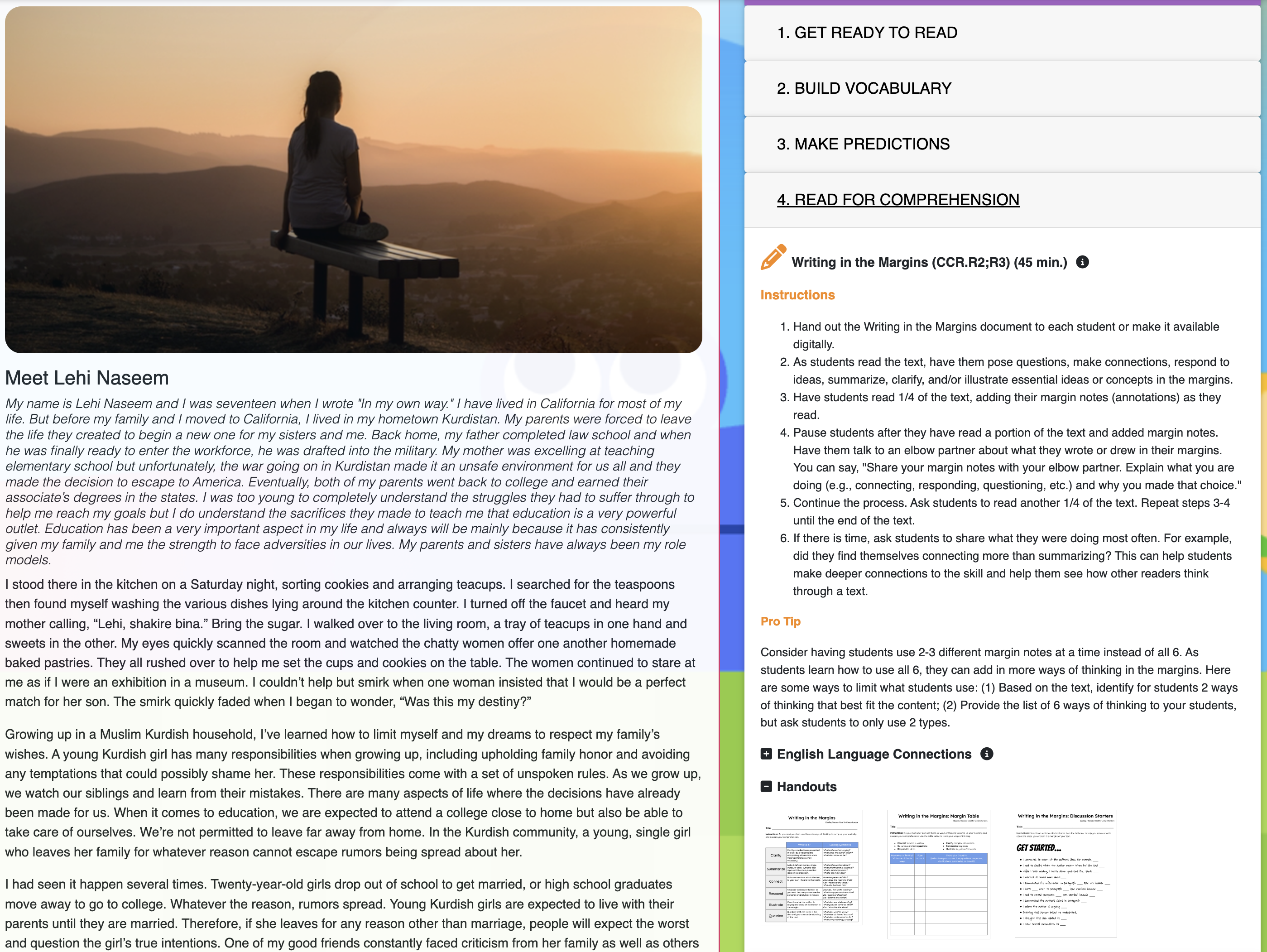
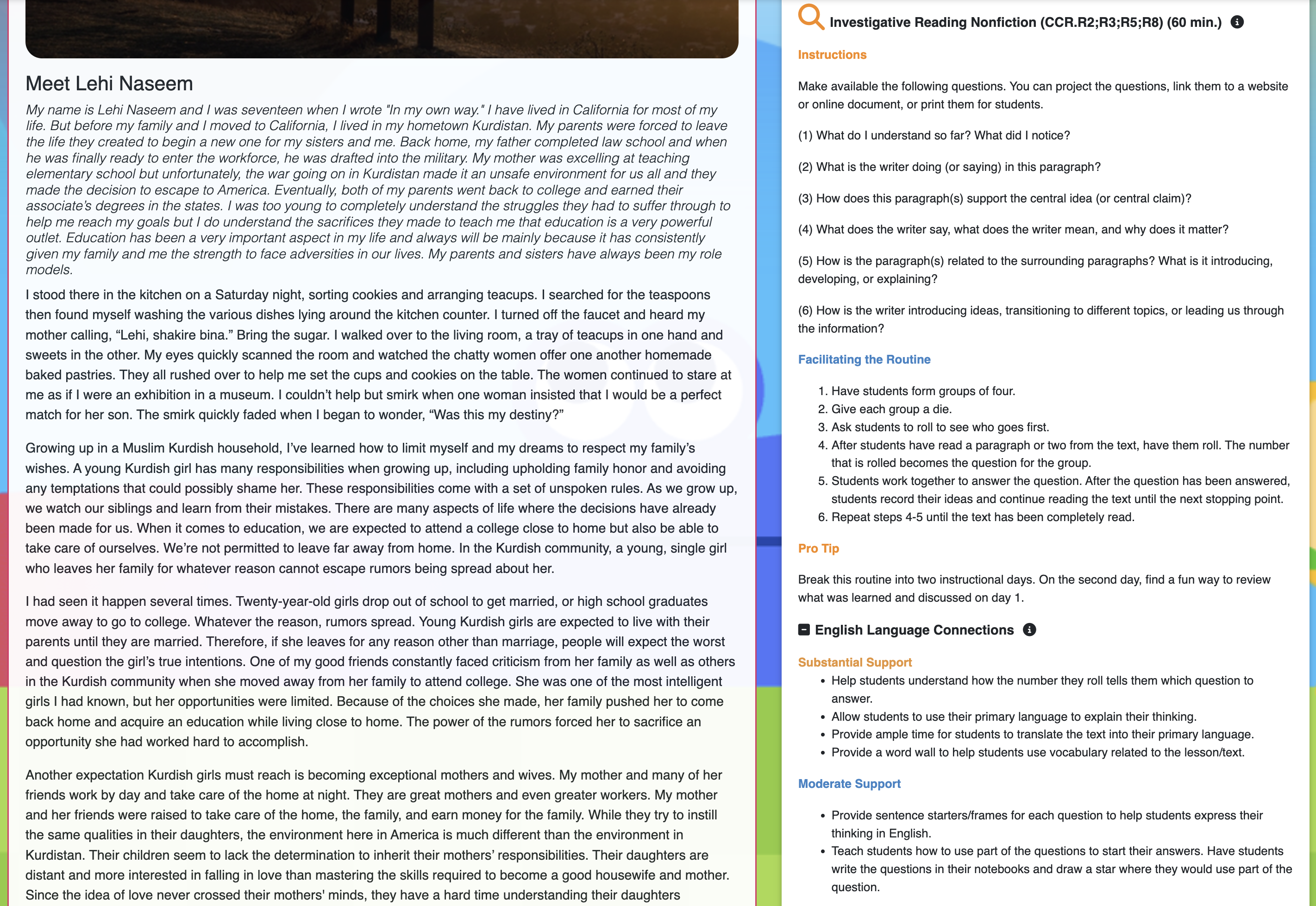
Differentiation for All Students
Our lessons allow educators to address individual strengths and challenges, promoting deeper engagement and understanding. By accommodating various skill levels and interests, students are empowered to develop their literacy skills more effectively and confidently.
- support vocabulary and language development with various wordplay activities and individually constructed dictionaries.
- increase access for various student groups with text summaries, leveled texts, and text-to-speech.
- confidently deliver designated and integrated language standards with our English Language Connections.
- enrich learning with our Take it up a notch" opportunities that challenge students to go beyond the standards.
- promote academic language development with sentence frames that guide students to think in complex ways.
- easily facilitate pair and small group discussions about text with embedded Pause and Discuss prompts.
How it works:
Spiraled Instruction
Predictable literacy routines establish a structured framework for continuous skill development. By revisiting learning strategies and essential literacy skills regularly, students solidify their understanding and build confidence in their abilities.
- create confidence in students as they rehearse predictable routines that help them develop new knowledge.
- encourage metacognitive awareness, enabling students to reflect on their learning progress.
- provide embedded support for all learners.
- elevate the multiple intelligences in the classroom (visual, auditory, kinesthetic, interpersonal, and linguistic-verbal).
- establish effective routines for analyzing prompts, vocabulary knowledge, comprehension reading routines, and writing and speaking routines.
How it works:
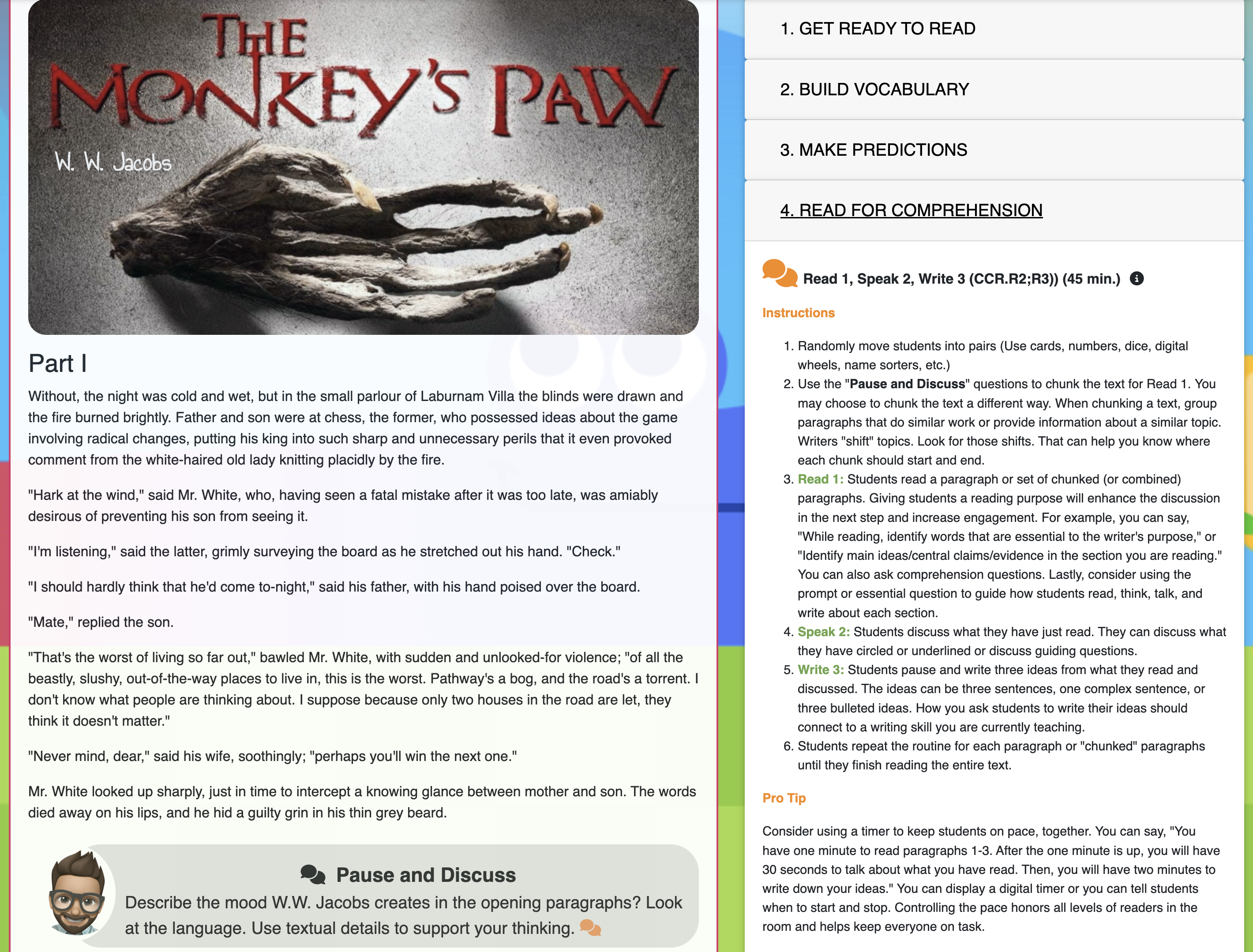
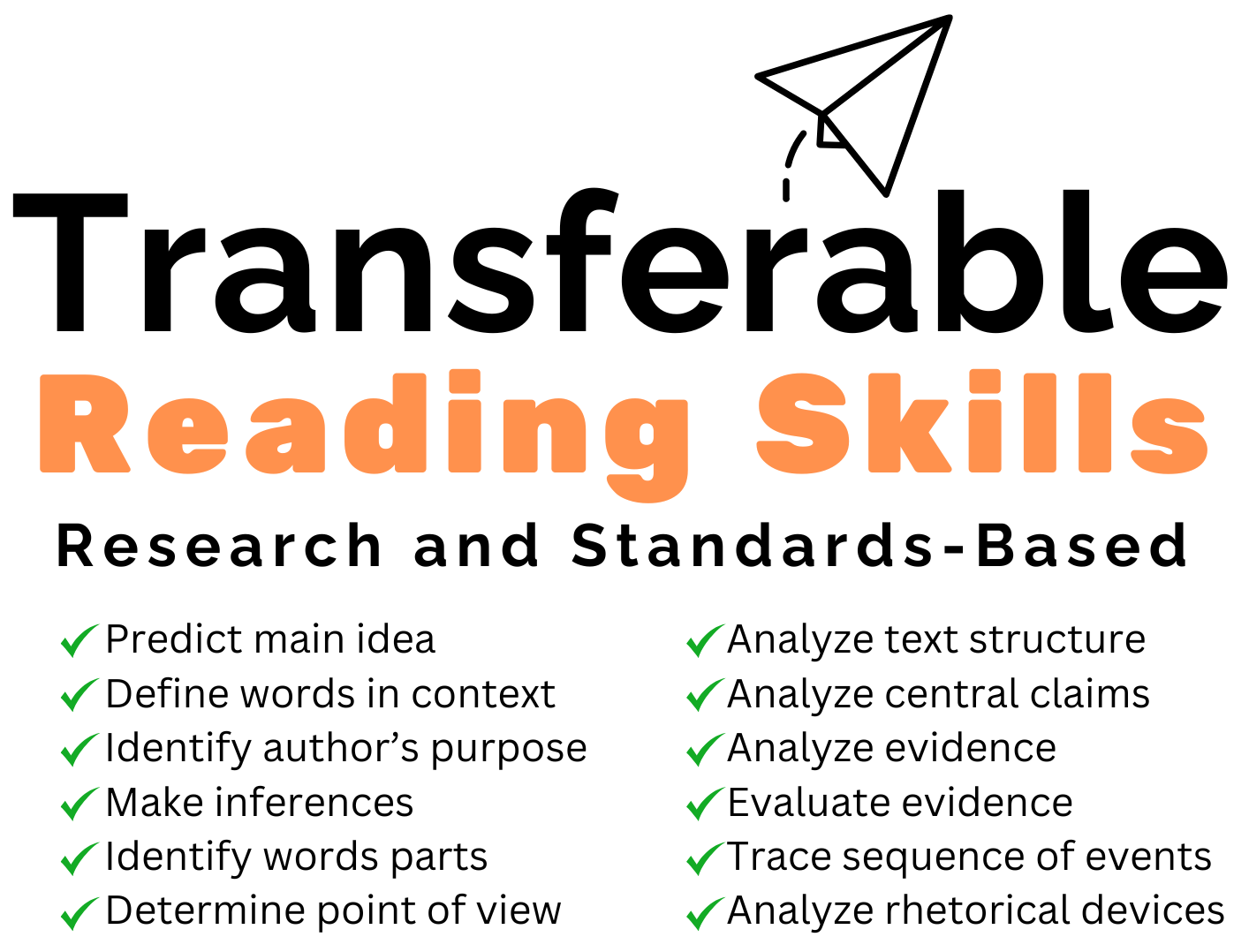
Transferable Skills
Our teacher-driven lessons focus on explicitly teaching essential literacy skills and standards that ready students for college and careers. The grade-level reading, speaking, writing, and collaborative skills taught in our lessons can transfer to other classes and lead to future academic success.
- vertically align reading, speaking, and writing standards to ensure students are building critical skills at each grade level.
- strengthen students' ability to breakdown complex texts and write about them in sophisticated ways.
- develop analytical and critical thinking skills essential for text-dependent writing tasks.
- rehearse and master a research-based reading and writing process that can be used for various academic tasks.
How it works:
Our Impactful Instructional Practices
High Expectations
Set high expectations for reading and writing and support every step in the process and improve engagement, growth, and confidence.
Cognitive Learning
Teach students how to use a literacy strategy independently and strategically by teaching them how to use it, when to use it, and why to use it.
Spiraled Instruction
Shift the responsibility for learning to students, rehearse academic skills, and gradually increase complexity so students develop critical thinking and problem solving skills.
Step-by-Step Teacher Guides
How it works for the Classroom Teacher:
When you are viewing a lesson, you will see the step-by-step instructions on the right side of the article. The instructions are conveniently placed next to the text. The lesson is broken into three main components: Before, During, and After reading activities. Teacher moves are explicitly stated and strategies for increasing engagement and access for all students are embedded throughout the lesson.
How it works for the Student:
As the classroom teacher guides students through the lesson, students have access to the text and activity handouts.
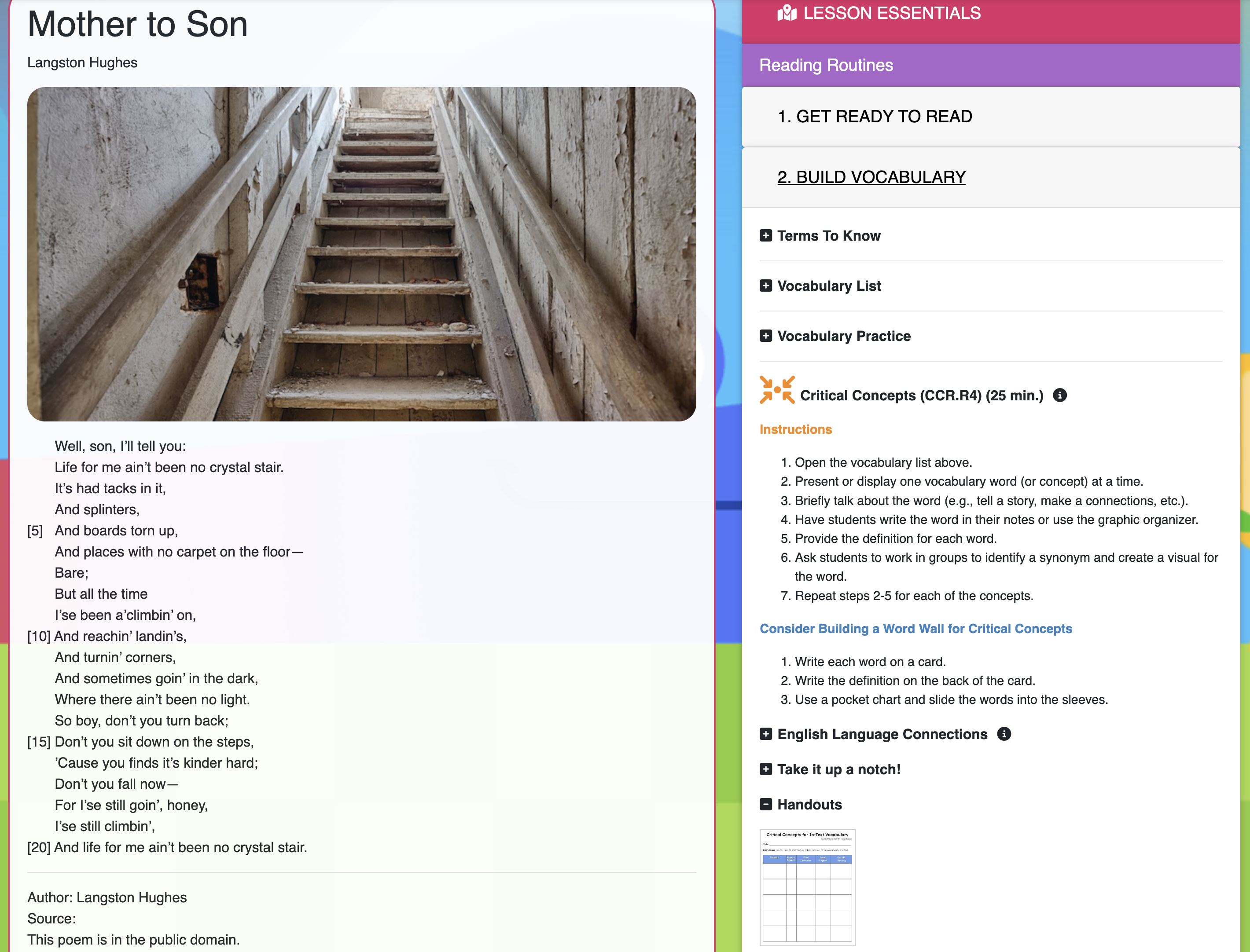

Routine-based Learning
How it works for the Classroom Teacher:
Our predictable learning routines offer clear and explicit instructions so you and your students feel confident during each step in the process. You can easily respond to diverse learning styles and needs by turning on and off scaffolds, projecting academic language frames, and utilizing additional instructional components designed to enhance each unique routine.
How it works for the Student:
Students receive clear and explicit instructions for each routine. The routines spiral over the year as more and more lessons are used, so students become familiar with all the routines and master the ones that are rehearsed most often.
Thoughtful Vocabulary Instruction
How it works for the Classroom Teacher:
Each lesson provides various vocabulary activities for you to choose from. You can teach the critical concepts that have been identified for the lesson, teach in-text vocabulary, facilitate skits, and ask students to complete vocabulary practice activities.
How it works for the Student:
Students have access to vocabulary words and handouts. They also have an opportunity to support their own learning by identifying unfamiliar words in the text they are reading. Our language dictionary defines each unfamiliar word in context and provides additional information to help students understand not only the meaning of the word but also how the word is used.
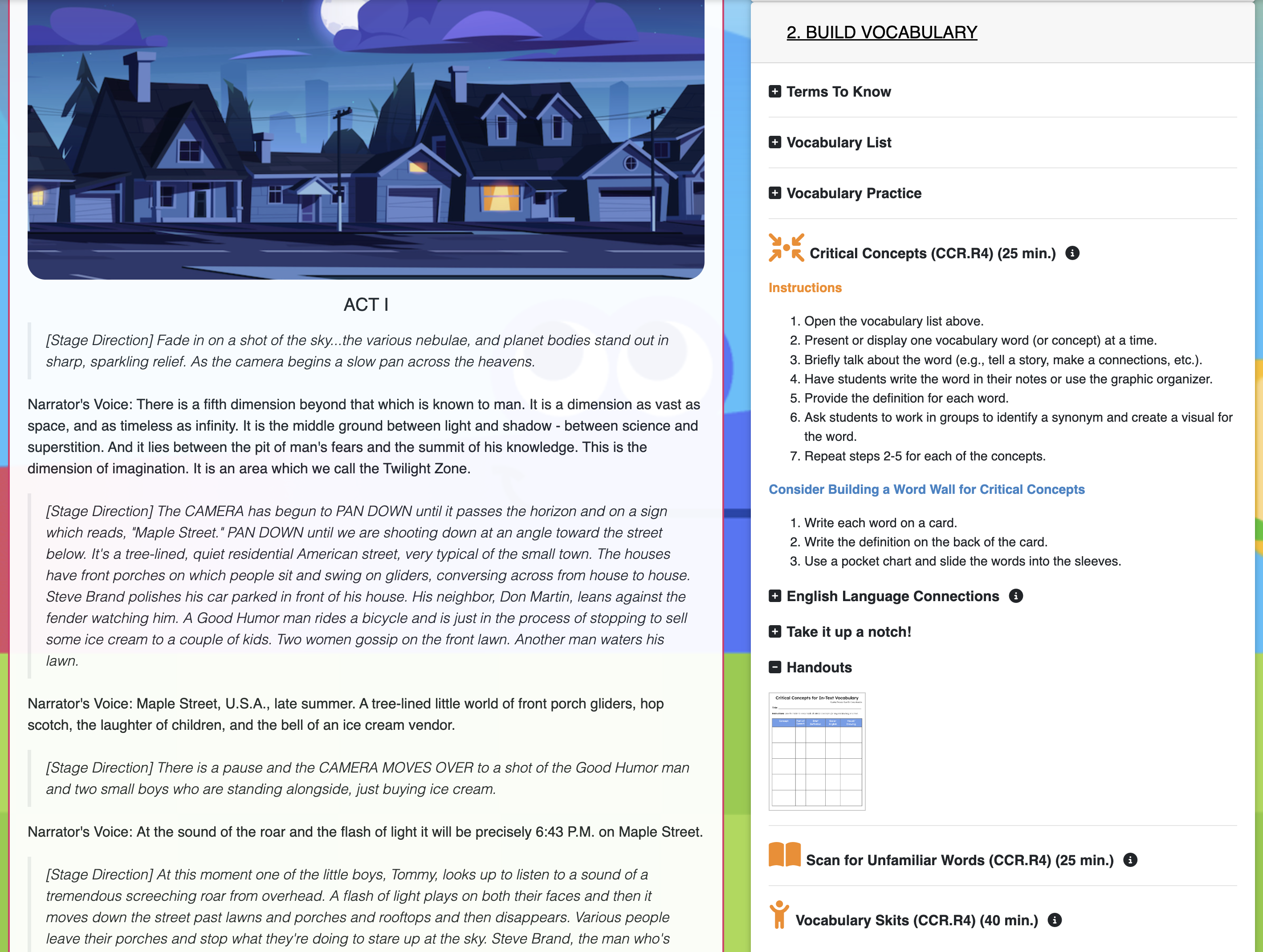
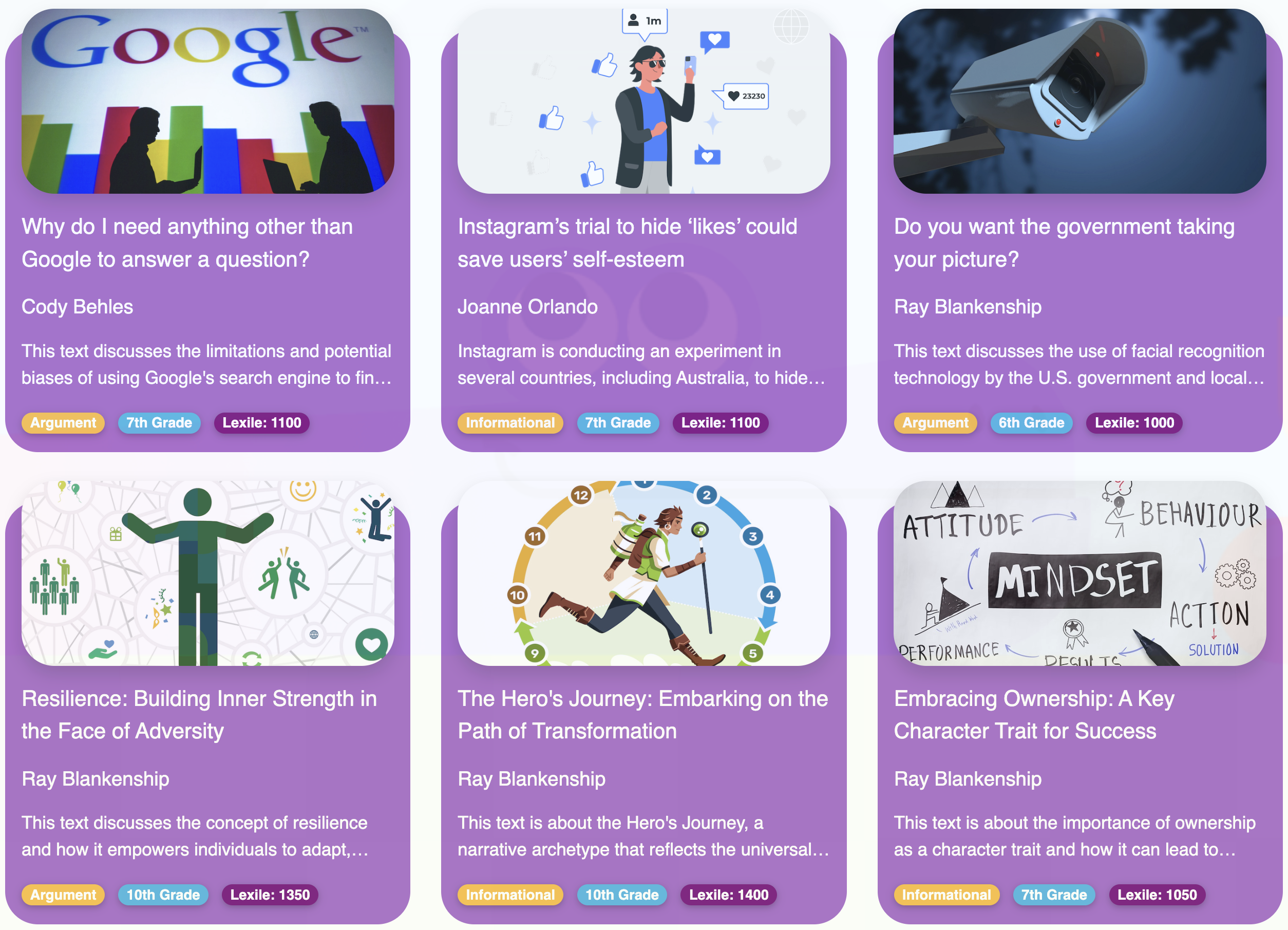
Assign Single Lessons or Units
How it works for the Classroom Teacher:
Teachers have the flexibility to assign single lessons or themed units.
Assigning a lesson to a class is a snap! Teachers can preview the standards and outcomes for the lesson, review the skills that will be taught, and go through the pre-reading, during reading, and post reading activities. If a teacher wants to teach the lesson, all they have to do is click "Assign to Class."
How it works for the Student:
Once assigned, students will see the lesson in their Assignments list. They can click on the lesson and view the text and begin scanning for unfamiliar words. Each routine in our lessons is text-dependent, so students will be asked to read and reread their text multiple times for multiple purposes.
Our Lessons Have 8 Key Teacher Moves!
Lesson Essentials
Each lesson provides a clear text summary, an essential question (EQ), Lexile reading level, and options for customizing support like turning on embedded discussion questions and text-leveling.
Get Ready to Read
Each lesson begins with a prompt that students analyze. The prompt explains what students should be focused on while reading; and it can be used for text-dependent writing practice and instruction.
Build Vocabulary
There are numerous opportunities to build vocabulary in each lesson. During this step in the process, students study critical concepts and "play" with various grade-level vocabulary words from the text.
Make Predictions
Complete this step before or after our vocabulary activities. Students study the image at the top of the article, read the first and last paragraphs, and make a prediction about the text's topic and structure
Comprehension
Once students mark their prompts, explore vocabulary, and make predictions, they are ready to start a reading comprehsion routine. Our comprehension routines are highly structured and engaging.
Analysis
Most of our lessons have analytical routines called Reading for Deeper Meaning. These routines ask students to go beyond what an author says and look closely at what an author does in a text.
Review
There are opportunities in each lesson to review key components. There are vocabulary review activities, comprehension questions that we recommend doing in groups, and summary activites.
Reading to Write
Each lesson offers post-reading activities that teach specific writing skills like integrating sources and a text-dependent writing assignment that follows a standards-based process...that we grade!